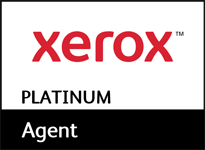Print Production Guide With The Xerox IJP900 Inkjet Press
What is print production?
It can be said that print production is an art, wherein print artists apply their artistry via precise standards, with sophisticated technology and exceptional skill.
When thinking of print production, think books, magazines, pamphlets, brochures, and other printed mediums. Print production is the process of creating these printed materials and the many other versions you see in the market. With the Xerox IJP900 Inkjet Press, its arena of media specialty is cut-sheet media, so it is the perfect workhorse for the likes of the printing of booklets, brochures, BRCs, calendars, EOBs, forms, invoices, leaflets, letters, manuals, pamphlets, postcards, reports and statements. Print production begins with layouts, either digital layouts or analog layouts, which are prepared using various methods such as screen printing, offset, or digital. The complete process of print production begins with one of these layout options in what is recognized as the prepress, or pre-production phase, and from there moves to the printing phase, or the production phase, where the copy is actually printed, and finally the finishing phase, or the post-production phase, where the media is assembled or finished in its final composition.
The Pre-Production / Prepress Phase With The Xerox IJP900 Inkjet Press
The print production process begins with the prepress phase, or what we will refer to as pre-production. Pre-production is the foundation of print production without which printing would quickly go astray from any print target hoped to be reached. It serves the function much like blueprints serve in the construction and building trades, providing precise copy which is integrated with the standards designed to be incorporated. Pre-production can move from a wide array of ideas which may be presented via brainstorming sessions, then be refined in concept and design, and eventually move to preparing the materials that are the necessary foundation from which to product printed products.
Following, are a few key concepts that define the pre-production phase of print production.
The first is conceptualization. Conceptualization is the initial stage in pre-production wherein creativity rules the meeting as print teams begin brainstorming to set the table with a broad array of ideas. This print pre-production brainstorming stage can involve everything from simply indentifying problems to drafting preliminary designs and conceiving communication strategies.
The second stage in the pre-production phase of print production, with the Xerox IJP900 Inkjet Press, is design creation. Following the finalizing of the concepts that will be included in the print production, the team’s graphic designers begin to employ creative design expertise with their specialized softwares such as Photoshop and Adobe Illustrator, as they decide upon and apply the elements of layout, color schemes, and typeface.
The third stage in the pre-production phase of print production, with the Xerox IJP900 Inkjet Press, is the review of the selected artwork. The production print team will do a full review of the artwork to proof it for errors as well as to consider and decide upon suggested changes once the graphics had been seen. A full and comprehensive review of the artwork helps to ensure that the graphics. which were created, fully meet the specifications, the expectations, and the vision which were agreed upon.
The fourth and final stage in the pre-production phase of print production, with the Xerox IJP900 Inkjet Press, involves preliminary proofing. Prior to the print project moving to the production phase, a preliminary proof is prepared. The preliminary proof is usually either a virtual representation of the final product or an actual, physical representation of it. When the print team can put their eyes on the preliminary proof of the final product, it helps and allows them to take into account any additional changes or adjustments they think should be incorporated as they decide upon the final adjustments.
The Production / Print Phase With The Xerox IJP900 Inkjet Press
Regarding the print phase, or the production phase of print production as we will refer to it, several decisions may come into play, depending on whether the print production will be printing booklets, brochures, BRCs, calendars, EOBs, forms, invoices, leaflets, letters, manuals, pamphlets, postcards, reports, statements, or some of the other media a team might print with the Xerox IJP900 Inkjet Press.
Once the appropriate media is determined, the print team will load the media type which is called for with the print run, whether it be plain paper, uncoated, or super smooth and inkjet treated media in the matte, silk or plain selections. After checking the 3-liter sized ink tanks and double checking that any additional paper feeders (if needed) are utilized and checking that what is needed in terms of paper stacking and finishing, are in place, everything should be deemed ready to go and the print team can begin printing at high speed with business-quality color output.
With everything loaded and ready to go, the Xeox IJP900 Inkjet Press will print up to 150 A4 (210 mm x 297 mm) sheets per minute, in color and black and white, and up to 146 Letter (8.5″ x 11″) sheets per minute.
The Post-Production / Finishing Phase With The Xerox IJP900 Inkjet Press
Once the Xerox IJP900 Inkjet Press has produced its low price-per-page, cost-effective run of media, the print team begins the finishing phase, or the post-production phase of print production as we will refer to it. The post-production press phase will zero in on quality assurance measures such as ensuring that the leftover ink washed away, that the paper remained trimmed, and quality inspecting for misprints or other imperfections. Here, it will be determined if the end product meets or exceeds the quality expectations.
Following, are a few key steps in the post-production phase of print production.
The first stage in the post-production phase of print production with the Xerox IJP900 Inkjet Press is the quality assurance stage. The quality assurance stage, which can include visual inspections, digital proofs, and more, involves rigorous quality checks to ensure the final product meets the desired standards.
The second stage in the post-production phase of print production with the Xerox IJP900 Inkjet Press is the packaging and distribution stage. After approving the final print, shipping specialists will carefully package and distribute the print order. The appropriate packaging is crucial for quality delivery, whether the final product is made up of booklets, brochures, BRCs, calendars, EOBs, forms, invoices, leaflets, letters, manuals, pamphlets, postcards, reports or statements.
The third stage in the post-production phase of print production with the Xerox IJP900 Inkjet Press is the collection of feedback from those on the print team who were involved with the print run, from beginning to end. Collecting feedback from the print team members, at this stage, is of utmost importance as it can help in the process of future print productions being produced with improvements and offerings that could add value to the end production.
The fourth stage in the post-production phase of print production with the Xerox IJP900 Inkjet Press is the inventory management stage. Thorough and accurate tracking of ink and media stock will help to ensure future print production efficiency and cost management.
The fifth and final stage in the post-production phase of print production with the Xerox IJP900 Inkjet Press is the data records stage. Assessing and recording data which can be collected from the full print production process will help the print team to accurately fulfil future orders and with subsequent audits. These up-to-date records will help the team to effectively manage current supply and demand so they are in a solid place for future demand.


